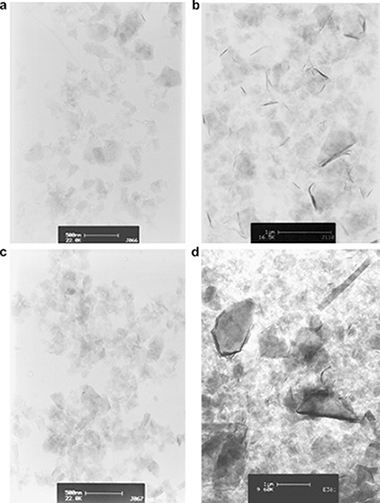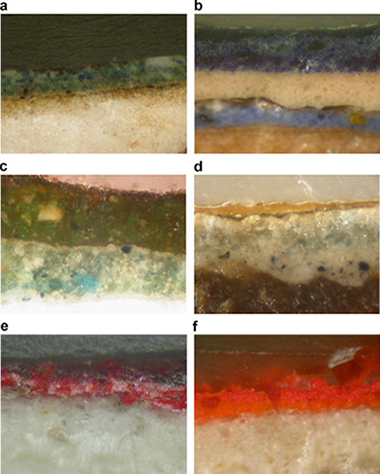Artículos SCI
2009
2009
Química de Superficies y Catálisis
AISI 304 Austenitic stainless steels monoliths for catalytic applications
Martinez, LM; Sanz, O; Dominguez, MI; Centeno, MA; Odriozola, JAChemical Engineering Journal, 148 (2009) 191-200
Show abstract ▽

The thermal treatments of austenitic stainless steels monoliths were studied in order to generate a highly homogeneous and rough oxide scale strongly attached to the base alloy, which will subsequently ensure the good adherence of the catalysts. In this work it has been shown that the morphology, integrity and homogeneity of the scale are strongly influenced by the temperature and time of treatment. Washcoating method was used to deposit on the monolith surface a Au/CeO2 catalyst. The drying procedure turned out to be the most critical variable for the adherence and homogeneity of the catalytic ceria layer, while the ceria colloid concentrations in the starting aqueous dispersion seems to have only a threshold effect. The monolithic reactors containing Au/CeO2 layers are active in the oxidation of CO.
Mayo, 2009 | DOI: 10.1016/j.cej.2008.12.030
Nanotecnología en Superficies y Plasma
Molecular dynamics simulation of the effect of pH on the adsorption of rhodamine laser dyes on TiO2 hydroxylated surfaces
Hamad, S; Sanchez-Valencia, JR; Barranco, A; Mejias, JA; Gonzalez-Elipe, ARMolecular Simulation, 35 (2009) 1140-1151
Show abstract ▽
We have carried out a study of adsorption, on the (1 0 1) surface of anatase TiO2, of two industrially relevant rhodamine molecules [rhodamine 6G (R6G) and rhodamine 800 (R800)] employing molecular dynamics. These theoretical studies have shown that R6G must adsorb on surfaces under basic conditions. Moreover, the adsorption of this molecule shows a strong dependence upon the pH of the system, i.e. under basic conditions the adsorption energy is quite high, under neutral conditions the adsorption energy is lower and under acidic conditions an even lower adsorption energy indicates that there must be very little adsorption under such conditions. By contrast, for R800, there is little dependence of the adsorption energy upon the pH, suggesting that the amount of adsorption of these molecules is little affected by this parameter. These theoretical results are in qualitative agreement with the experimental results consisting of the incorporation of these dye molecules into porous thin films.
Mayo, 2009 | DOI: 10.1080/08927020903108083
Nanotecnología en Superficies y Plasma
Surface nanostructuring of TiO2 thin films by ion beam irradiation
Romero-Gomez, P; Palmero, A; Yubero, F; Vinnichenko, M; Kolitsch, A; Gonzalez-Elipe, ARScripta Materialia, 60 (2009) 574-577
Show abstract ▽

This work reports a procedure to modify the surface nanostructure of TiO2 anatase thin films through ion beam irradiation with energies in the keV range. Irradiation with N+ ions leads to the formation of a layer with voids at a depth similar to the ion-projected range. By setting the ion-projected range a few tens of nanometers below the surface of the film, well-ordered nanorods appear aligned with the angle of incidence of the ion beam. Slightly different results were obtained by using heavier (S+) and lighter (B+) ions under similar conditions.
Abril, 2009 | DOI: 10.1016/j.scriptamat.2008.12.014
Sonication induced redox reactions of the Ojén (Andalucía, Spain) vermiculite
Poyato, J; Perez-Rodriguez, JL; Ramirez-Valle, V; Lerf, A; Wagner, FEUltrasonics Sonochemistry, 16 (2009) 570-576
Show abstract ▽

Sonication in a 1:1 mixture (volume ratio) of water and concentrated H2O2 (30%) is a soft method for particle size reduction of phyllosilicate minerals like vermiculites. Repeated sonication causes a particle size reduction to about 70 nm for the Santa Olalla and to 45 nm for the Ojén-vermiculite. In this context the question arises whether the strong oxidising effect of the hydrogen peroxide affects the oxidation state of the iron in the vermiculites. Therefore, the Fe3+/Fetotal ratio before and after sonication was determined by means of Mössbauer spectroscopy. Whereas this ratio was found to remain almost constant in the Santa Olalla vermiculite, it increased from 0.79 to 0.85 in case of the Ojén sample. In the latter case, the oxidation is accompanied by a decrease of the layer charge.
Surprisingly, sonication in pure water leads to a decrease of the Fe3+/Fetotal ratio in the case of the Ojén-vermiculite, i.e., to an increase of the Fe2+ fraction to roughly twice the value before sonication. Again the Fe3+/Fetotal ratio of the Santa Olalla vermiculite remains unchanged. The surface area SBET of the reduced Ojén-vermiculite amounts to 50 m2/g, which is close to the value obtained in the presence of hydrogen peroxide. The results presented should be taken as a warning that particle size reduction by sonication may be accompanied by a change of the redox state and the layer charge of the material.
Abril, 2009 | DOI: 10.1016/j.ultsonch.2008.12.009
Comparison between micro-Raman and micro-FTIR spectroscopy techniques for the characterization of pigments from Southern Spain Cultural Heritage
Franquelo, ML; Duran, A; Herrera, LK; de Haro, MCJ; Perez-Rodriguez, JLJournal of Molecular Structure, 924-926 (2009) 404-412
Show abstract ▽

An extensive overview of the complementary use of micro-FTIR and micro-Raman spectroscopy in the Cultural Heritage studies is described in this work.
The samples have been prepared using the cross-section technique. This technique allows the examination of a large portion of a single paint layer in its original condition. A variety of pigments from samples belonging principally to the Cultural Heritage of Southern Spain were characterized by micro-Raman spectroscopy using visible excitation sources and micro-FTIR spectroscopy. The pigments studied comprise blue (azurite, ultramarine blue, Prussian blue), red (vermilion, haematite, red ochre, red lead, etc.), ochre and yellow (goethite, orpiment, realgar, etc.), green (malachite, copper resinate), and white (calcite, gypsum, white lead, titanium white, barite, lithopone) pigments, among others. An orientation is given for their appropriate and unequivocal characterization. Characterization by micro-FTIR and micro-Raman presents difficulties with some pigments. In these cases, analysis by EDX solves most of these doubts. The combined use of both spectroscopic techniques, together with SEM–EDX microanalysis, provides one of the most useful methods in the characterization (and possible dating) of materials used in Cultural Heritage.
Abril, 2009 | DOI: 10.1016/j.molstruc.2008.11.041
- ‹ anterior
- 400 of 422
- siguiente ›














